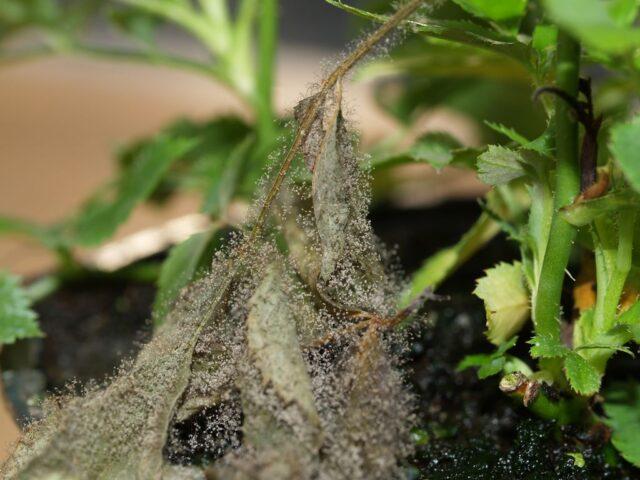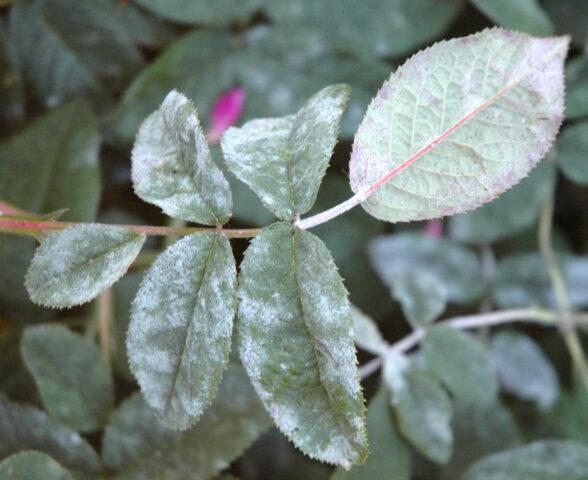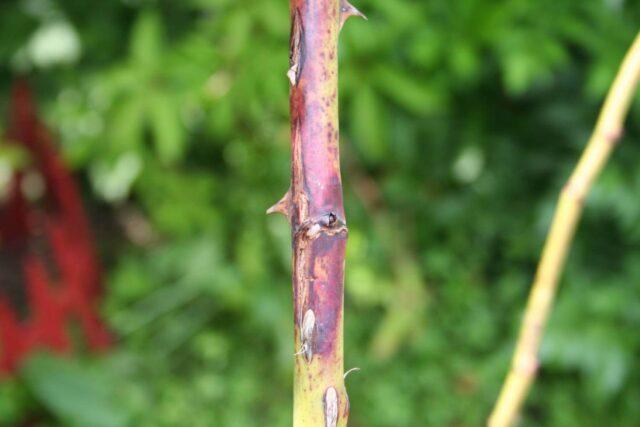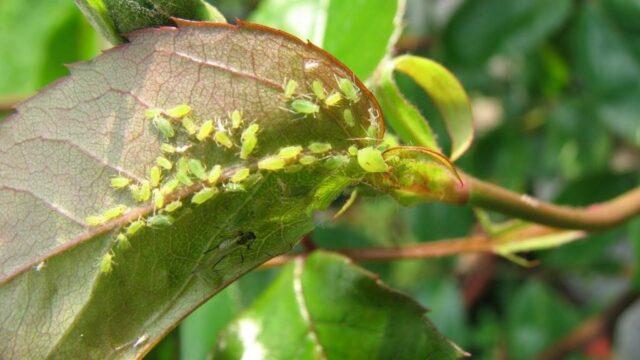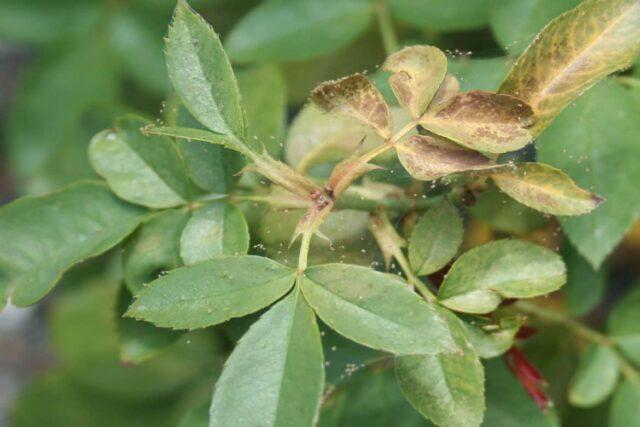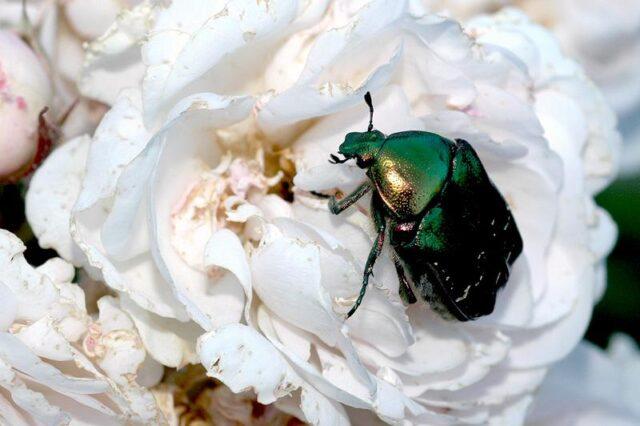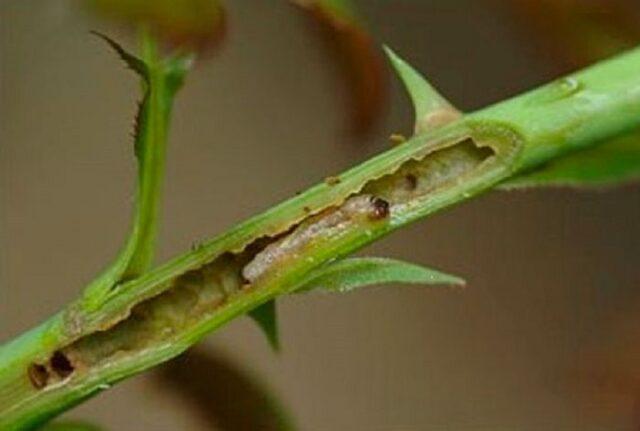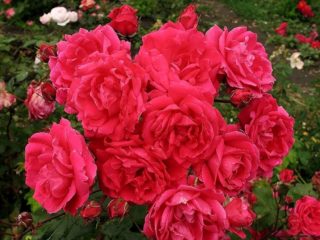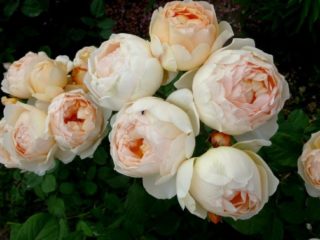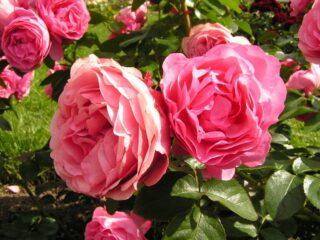Content
Boeing Hybrid Tea White Rose is the embodiment of freshness, tenderness, sophistication and simplicity. The flower represents the group of Gustomakhrovy. Snow-white dense buds have a characteristic elongated shape. The immaculately white shade can over time mix with a subtle creamy tone in the central part of the inflorescence. The large flowers of the Boeing rose amaze with their large numerous petals slightly pointed at the ends.
Experienced gardeners note that Boeing is a high-quality hybrid tea ornamental crop with fairly high endurance rates.
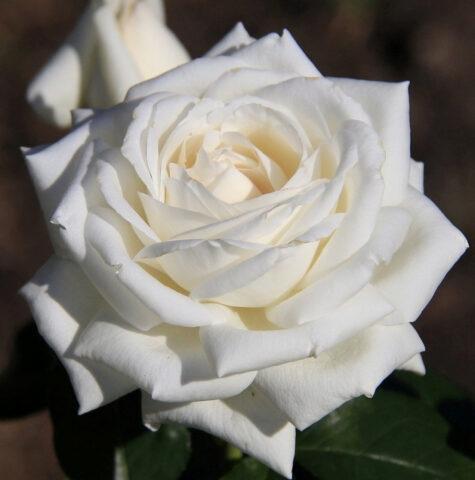
A distinctive feature of Boeing hybrid tea white roses is considered to be the duration of flowering and durability in the bouquet.
Breeding history
Boeing white hybrid tea rose is the result of the work of the Dutch breeding company Terra Nigra Holding B.V (Kudelstart). The flower belongs to the group of cut Florists Rose. Presumably, the name of the variety comes from the impressive size and white color of the buds that are associated with the famous aircraft model.
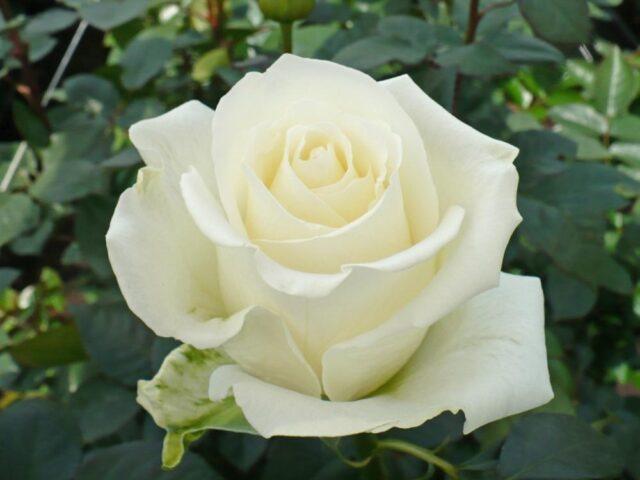
Boeing White Hybrid Tea Rose is a re-flowering variety
Description and characteristics of the Boeing hybrid tea rose
Boeing White Hybrid Tea Rose is an eternal classic, ideally in harmony with any stylistic directions of landscape design. The decorative culture is distinguished by the following features:
- bush densely branched and highly leafy;
- semi-spreading form;
- foliage is abundant, dark green;
- bush height up to 120 cm;
- bush diameter up to 90 cm;
- stems are straight, long, even, with one flower;
- buds are dense, elongated, goblet;
- flowers are terry, single, large, with a diameter of more than 12 cm;
- the number of petals in one flower is about 42-55 pieces;
- the shape of the petals is slightly pointed at the end;
- the color of the petals is white, when blooming with a milky or creamy tint;
- refined, light aroma;
- flowering duration up to two weeks.
Boeing rose is characterized by an average level of resistance to pests and diseases.
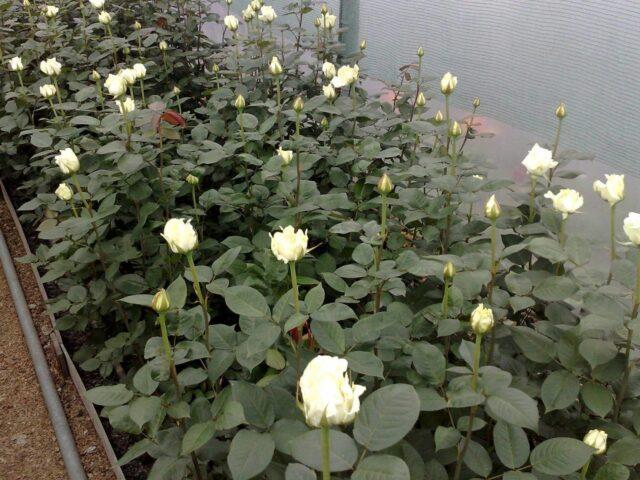
Boeing Hybrid Tea White Rose has a high winter hardiness
Advantages and disadvantages of the variety
The advantages of the Boeing hybrid tea rose include:
- re-flowering;
- even and long peduncles;
- compact and slender shrub;
- long flowering on bushes without loss of decorative effect;
- durability in cut (up to two weeks);
- large and dense buds;
- resistance to fungal diseases (powdery mildew);
- frost resistance (tolerates temperatures up to - 29 ⁰С);
- exceptional snow-white color of flowers.
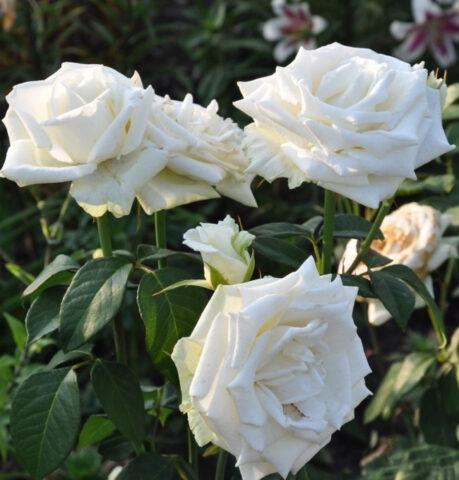
Boeing white hybrid tea roses delight with their flowering until the very frost
Among the disadvantages of an ornamental plant are:
- in rainy weather, flowering is significantly reduced;
- on hot days, the petals are deformed;
- there are thorns on the stems.
Reproduction methods
Rose Boeing (Boeing) reproduces in a universal way (cuttings, layering, ready-made seedlings).
Reproduction using ready-made seedlings is used more often than other methods. The material is transplanted into open ground in spring or autumn. Young plants of Boeing roses are prepared for moving in advance:
- for about two days, the seedlings are kept in a solution that stimulates root formation;
- for group planting, the distance between the holes must be at least 50 cm;
- the planting pits are abundantly moistened (10 liters per seedling);
- the depth and width of the hole must be at least 50 cm;
- seedlings are placed in holes, sprinkled with earth to the level of the graft bud, watered.
The planting site for the Boeing hybrid white tea rose should be chosen in sunny areas and in conditions of little shade. The soil must meet the requirements:
- well drained;
- loose;
- neutral or slightly acidic;
- fertile;
- fertilized with organic mixtures.

The Boeing rose planting hole must be filled with a nutrient mixture of peat, sand and manure
Growing and care
Caring for a Boeing hybrid tea rose does not differ in complex agricultural technology:
- moderate watering no more than once a week (at the rate of 10 liters of water per bush);
- loosening the soil around the bushes 1-2 days after watering;
- weeding around the bushes to prevent the development of fungal and bacterial diseases;
- regular feeding with organic and complex mineral fertilizers for flowering plants (about six times per season);
- annual sanitary pruning (removal of dry, wilted leaves, stems, buds);
- pruning to form a bush;
- preparation for winter (pruning shoots to the base with buds, sprinkling with earth, foliage, covering with polyethylene, agrofibre).
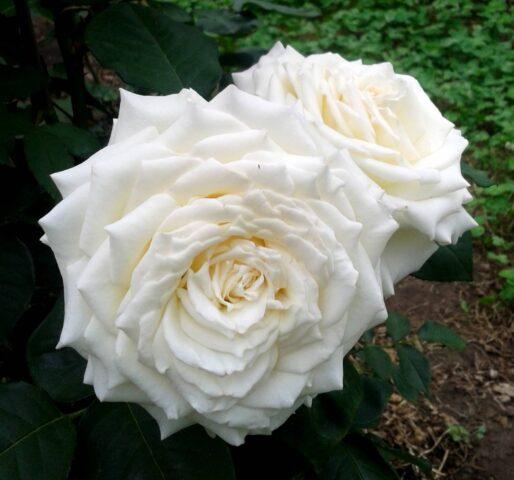
Improper care of the Boeing hybrid tea can lead to weakening of the immune system
Pests and diseases
Boeing white rose is characterized by an average degree of resistance to the effects of some pathogens. The following ailments can affect the culture:
- Root mold can occur on plants as a result of abundant or frequent watering. The causes of the appearance of a pathogenic fungus are improper winter shelter of an ornamental culture, low temperatures with abundant watering. The tone of plaque on the root zone of Boeing litter can vary from white to various shades of gray, depending on the different stages of development of the fungus.
Effectiveness in the fight against root mold fungi is shown by such drugs as Alirin, Fitosporin
- Gray rot (the causative agent is the fungus Botrytis) provokes the appearance of unaesthetic gray spots on the foliage and buds of the Boeing rose. The pathogen-parasite infects the upper part of the plants, gradually descends downward. The fungus is carried by birds, insects, wind, precipitation. Gray rot is activated at high humidity (fogs, morning dew), cool weather or temperature changes.
In case of detecting a fungal disease gray rot, it is necessary to use Fundazol, Benorad, Benomil
- Powdery mildew - a dangerous fungal disease that can cause the death of the bush. It appears as a white, mealy bloom on foliage. It provokes the development of the fungus Sphaeroteca pannosa. Powdery mildew is activated in hot weather, with high humidity, with an excessive content of nitrogenous fertilizers in the soil.
For the prevention and treatment of powdery mildew on Boeing roses, Topaz, Skor, Baktofit should be used
- Necrosis the bark on Boeing roses is manifested by a change in the natural color of the bark, dark growths or spots appear on the shoots. The affected areas begin to crack and die off rapidly. Shoots lose their decorative appearance. The causes of the disease can be increased soil and air humidity, an excess of nitrogen or a lack of potassium.
For the treatment of bark necrosis on Boeing roses, drugs such as Fundazol, Fitosporin-M, Abiga-Peak, HOM, Bordeaux mixture, copper sulfate are used
- Aphid Is a well-known sucking pest that feeds on plant sap. It multiplies rapidly. In the process of vital activity, it releases a sweet substance, which is an ideal breeding ground for pathogenic fungi and bacteria.
To combat aphids on Boeing roses, you can use folk methods (decoction of wormwood, tomato tops, tobacco)
- Spider mites - arachnid insects that inhabit rose bushes in dry, hot weather. During the growing season, the pest manifests itself in the formation of light spots on the leaves.
To combat spider mites on the Boeing rose, colloidal sulfur, preparations Fufanon, Iskra-M are used
- Golden bronze popularly called the "May beetle". During the period of budding and flowering, they eat delicate petals and young shoots. Rose bushes lose their decorative appeal. Pests can be collected by hand or cultivated near plants, because at night the golden bronze hides in the soil.
To combat golden bronze in the evening, the ground near the plants is poured with Prestige, Medvetox, Diazinon preparations
- Rose sawflies feed on young shoots and foliage of roses. Insects penetrate the inner part of the branch, after which the ornamental culture begins to wither and die.
The drugs Actellik, Inta-Vir, Antara are most effective in the fight against rose sawfly.
Application in landscape design
Decorative snow-white Boeing rose is an excellent solution for the design of the local area:
- for decorating mixborders in group compositions;
- as a tapeworm plant;
- for alleys;
- for rosaries;
- for zoning various parts of the garden.
Garden culture goes well with other varieties of roses, harmonizes well on the same bed with lilies, lavender, garden daisies, catchment, echinacea, phlox, lupine. The bright colors of other plants in the garden will effectively complement the snow-white decoration of the Boeing large-flowered hybrid.
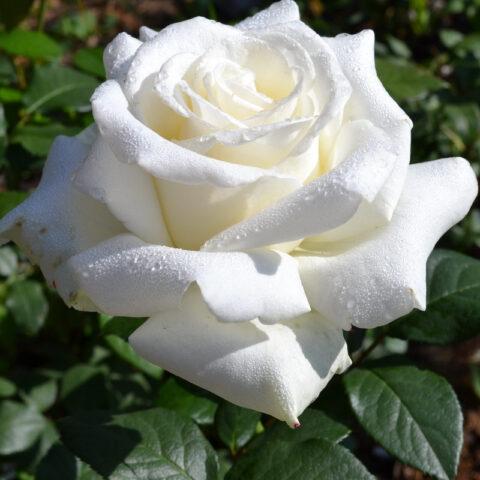
Due to the white color of the buds and incredible durability when cutting a rose, Boeing is used with great success by florists and wedding designers.
Conclusion
Rose Boeing is a great choice for both a large park and a small garden. The plant will perfectly fit into any stylistic direction of landscape design and will conquer with its unpretentiousness. The main bonus for owners is continuous flowering throughout the summer season.
Reviews of gardeners about the Boeing rose

